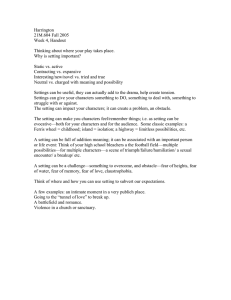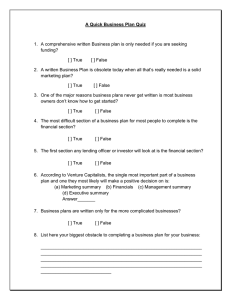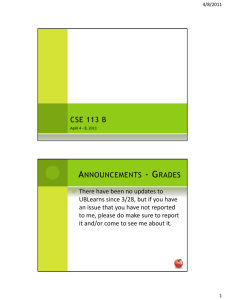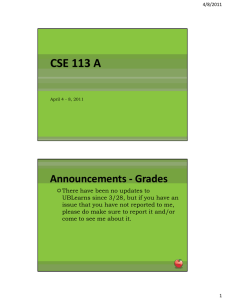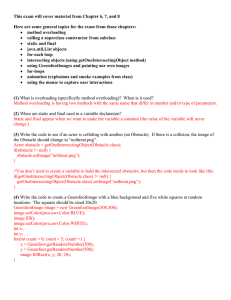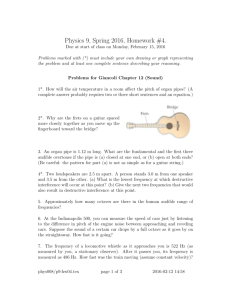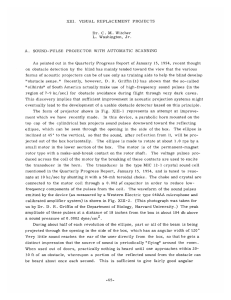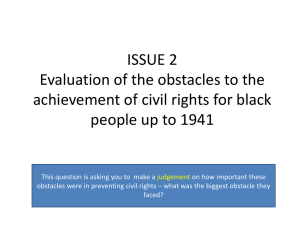Beat Analysis
advertisement
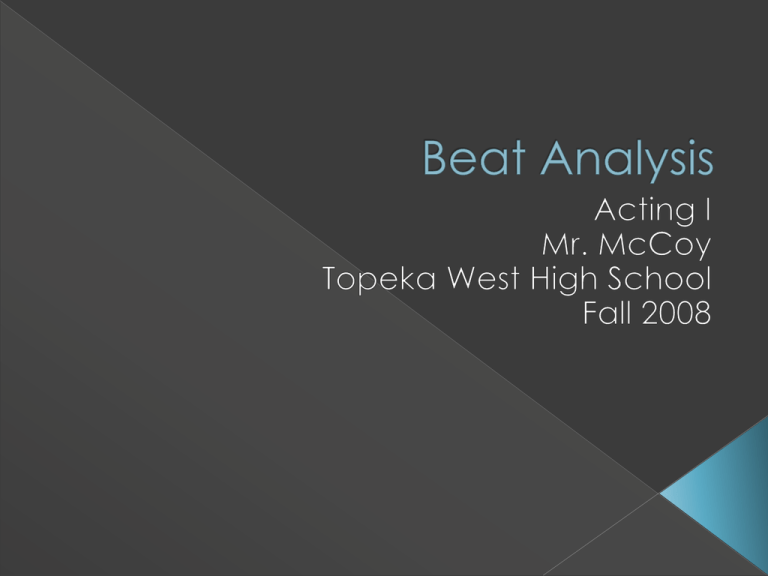
A beat is the smallest unit of conflict. Sequences of beats create a larger conflict. Four parts of a beat: › Objective › Obstacle › Action › Inner Image An objective is what the character wants. › What do I want now, and from whom? Why are objectives important? › An objective is the reason why people act. › An objective is the reason why a person speaks. › If an actor doesn’t know why they are doing or saying something, the audience won’t know either. to enrapture you to torment you to seduce you to amuse you to win approval to soften to stall to kill Examples eating dinner checking pockets Walking Talking to scramble Non-examples An obstacle is something (physical, mental, time, place, etc.) that stands in the way of action. An obstacle creates the conflict and the tension. › What is preventing me from attaining my objective? Why are obstacles important? › An obstacle focuses action and increases intensity. › If an actor doesn’t have an obstacle, no suspense or interest is created for the audience. no silverware empty wallet driver’s indifference poor visibility tiredness girlfriend doesn’t listen Examples An action is a physical activity. Something you can do. › What will I do to overcome my obstacle? Why are actions important? › Audiences remember what you do. › The audience cannot see your emotions or feelings. They can only see your actions. › Actions are immediate. Strong Actions To whine To avoid To annoy To complain To fall To blame Weak Actions To moan To escape To needle To collapse To spotlight To scramble To coo To cuddle An inner image is a mental picture that affects your psyche and actions. › What image of your life is similar in emotion to what the character is feeling? Why are inner images important? › Playwrights create real characters, but do not describe their feelings. You must connect to the character to create a believable performance.

